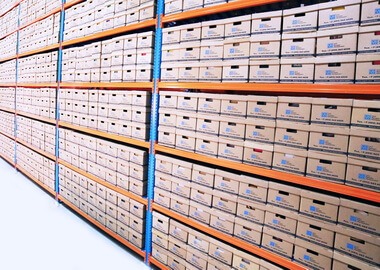12 Warehouse Automation Benefits for Your Business
Automation and data-driven operations are the basis of warehouse efficiency today. Every storage, logistics, and retail company considers integrating automation into their warehouses in response to increasing demand, booming eCommerce, and stringent competition. As of 2025, around 25% of organizations worldwide use warehouses automation. This is a big jump from just 5% ten years ago.
The strategies they choose, however, vary greatly depending on scale and budget. Understanding the benefits of warehouse automation helps businesses make informed decisions, optimizing productivity, reducing errors, and improving overall supply chain efficiency.
If you work in this sector, you probably have already implemented at least some warehouse optimization and automation strategies or are considering doing so in the future.
This post will walk you through the key benefits of warehouse automation for your business. It will also give you a good idea of custom software development for logistics industry and solutions you can use to modernize and optimize your warehouse operations.
But before we begin, let’s quickly review the concept of warehouse automation and how it affects modern logistics.
So what is warehouse automation? The idea of warehouse automation goes far beyond the use of robotic arms and RFID tags. AI technologies, autonomous vehicles, and modern monitoring systems open ample opportunities, helping managers reduce processing time, improve employee efficiency, and save time and money. Here are just a few examples of how it works.
Warehouse management solutions
Warehouse management software is a diverse category of tools that are seamlessly integrated into warehouse operations. They provide managers with better visibility, control and, ultimately, allow them to fully automate supply chain processes from order to distribution to shipping.
These systems vary in scale, too. Warehouse management systems (WMS) are common tools that help managers plan and automate daily routines across the warehouse, maintain inventory control, manage staff operations, and manage workflows. Multiple advantages of automated warehouse management system make it an essential back-office toolset for organizations of various sizes.
Warehouse Control System (WCS) is mainly focused on on-floor material handling operations. It connects people, machines, and goods and helps boost fulfillment speed and distribution efficiency.
Warehouse Execution System (WES) is a bigger solution that can either be integrated with existing WMS and WCS or have relevant functionality for all-in-one warehouse automation. These are truly smart systems that can help you unlock the full benefits of warehouse automation implementation. Relying on real-time data, they automatically adjust operations planning and execution depending on priorities, workload, resources, and capacity.
COFE WES by VARGO is a good example. VARGO helps different companies, from aerospace solution providers to popular apparel brands, automate their warehouse operations and bring impressive savings to the table.
Robots, drones and autonomous vehicles
Robots, controlled and autonomous vehicles are the main instruments for physical process automation in warehouse and distribution centers. These technologies are used to either augment human efforts or replace people and take over all the mundane, repetitive, or dangerous work.
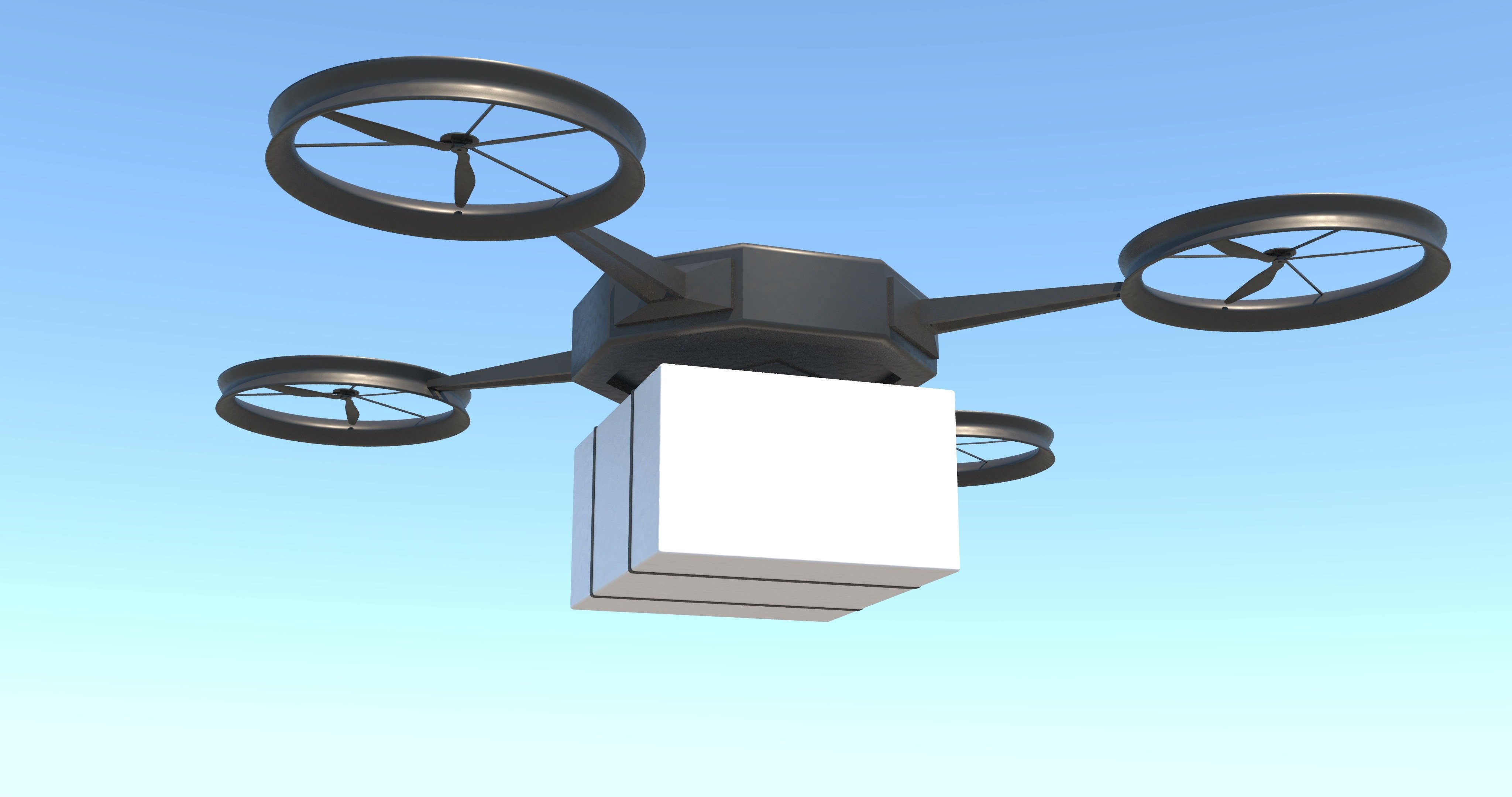
Robots and vehicles are used in various operations to drive automation in warehouse management. There are robots for picking and sorting, smart carts and forklifts for moving goods across facilities, and drones for conducting inventory and delivery. All of them require different levels of autonomy and mobility.
For instance, Automated Guided Vehicles (AGV) are preprogrammed to move along certain routes, have limited navigation capabilities, and require navigational software. On the contrary, Autonomous Mobile Robots (AMR) can navigate on the premises using sensors and maps and plan their routes depending on the job. Automated Storage and Retrieval Systems, or AS/RS, operate not only on the floor but also in 3D — pick up goods from bottom to top shelves, and crawl up the storage racks.
If you need a good example that demonstrates the benefits of fully automated warehouse, think of an Amazon warehouse before Black Friday or a regular day at Alibaba. They use different combinations of AMRs, drones, and autonomous vehicles to handle an enormous volume of orders and provide same-day delivery and similar services to their customers.
For example, by the end of 2024, Amazon had 750,000 AMRs across their warehouses performing various tasks, from transporting to sorting and packaging.
AI technologies in logistics
In 2024 and 2025, AI technologies bring a big benefit of warehouse automation to companies worldwide. They transform warehouse operations, making them more efficient and accurate. Robots, drones, and smart vehicles now use advanced AI to navigate and perform tasks. For example, they employ computer vision and deep learning to understand their surroundings and make decisions.
AI technology in warehouses also includes barcode tracking and robots that scan inventory. Dexory’s AMRs are a great example. These robots work 24/7, collecting data in real time, and improving accuracy and efficiency. With their help, warehouse operations can achieve up to 99.9% accuracy, reduce human errors, and save time.
Bring your operations to the next level
Looking for a skilled tech company to help you leverage the benefits of warehouse automation solutions and adjust them to your unique business needs?
Contact Digiteum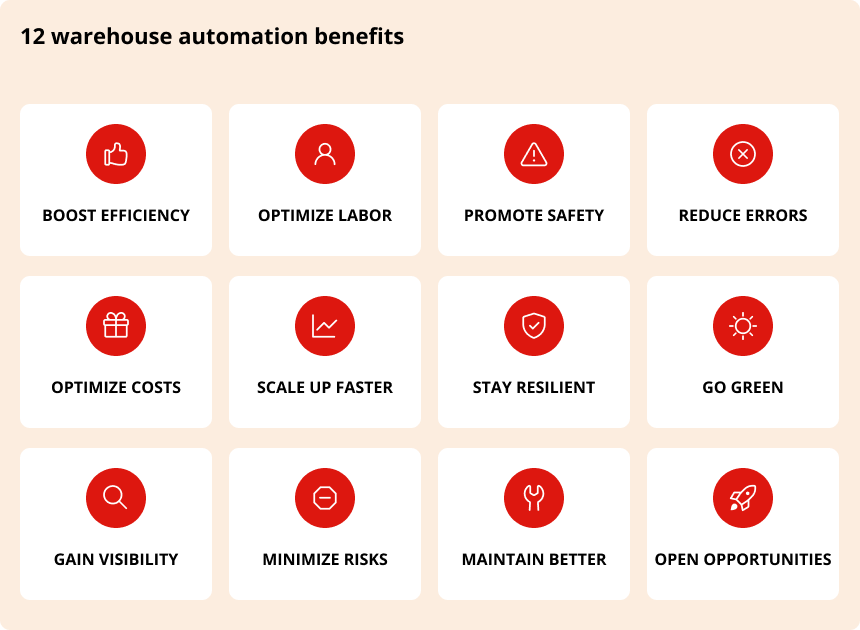
Boost efficiency and customer satisfaction
Perhaps the biggest benefit of warehouse automation and also one of the main reasons why large retailers and logistics companies invest in fully automated warehouse system development is to increase operational efficiency and better address growing customer demands. Smart warehouse today has much higher throughout, is immediately restocked and resupplied, enabling same-day delivery.
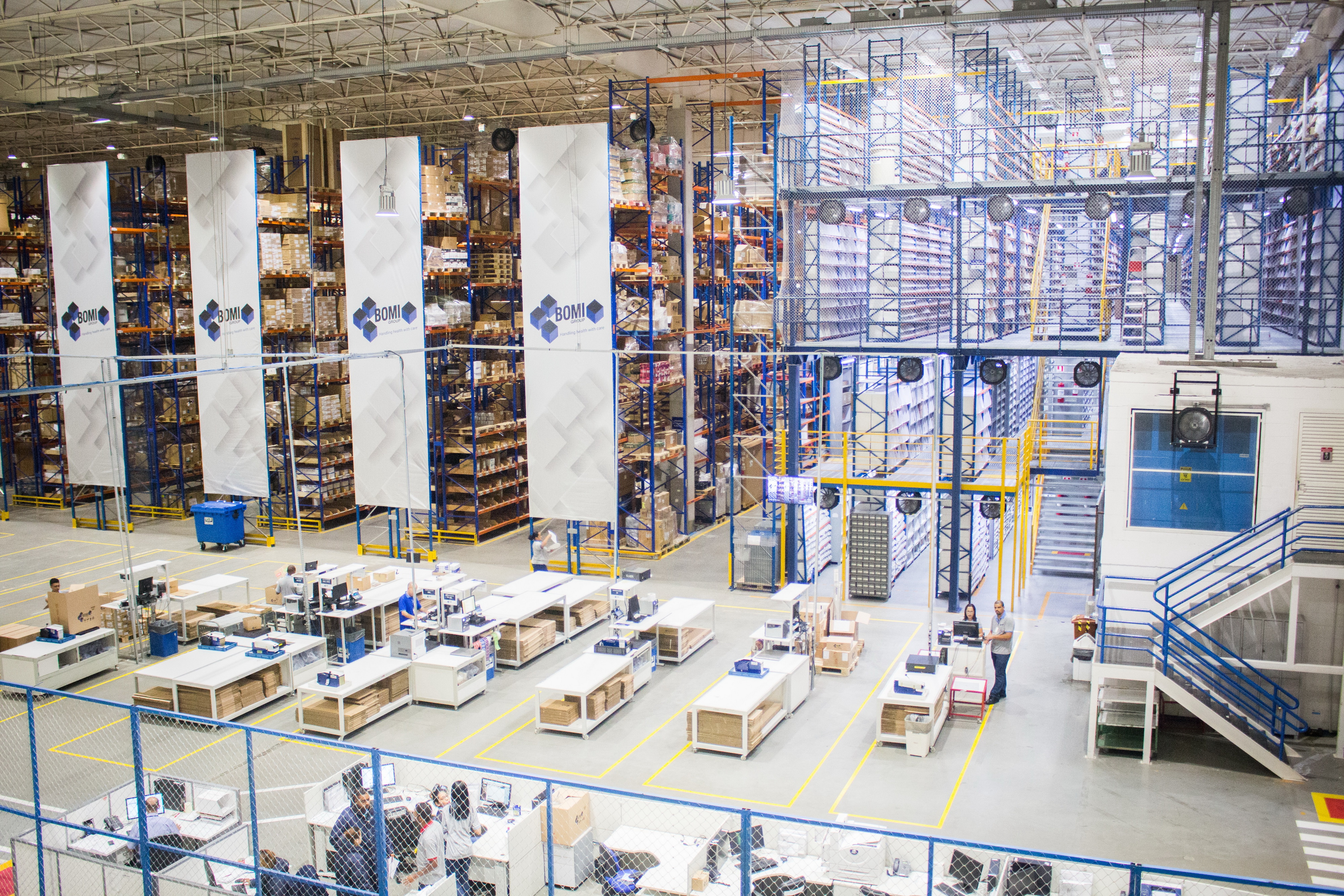
Improve labor management
It may seem backward, but a great deal of warehouse automation benefits are focused on warehouse employees. Instead of taking over people’s jobs, mobile robots and drones, for instance, help cut down on on-site commute time and do all the mundane work. It allows to better manage and employ human skills in warehouse operations.
As a result, warehouse employees are getting engaged in more intellectual work, more satisfied with their jobs and motivated to further improve their skills.
Promote safety
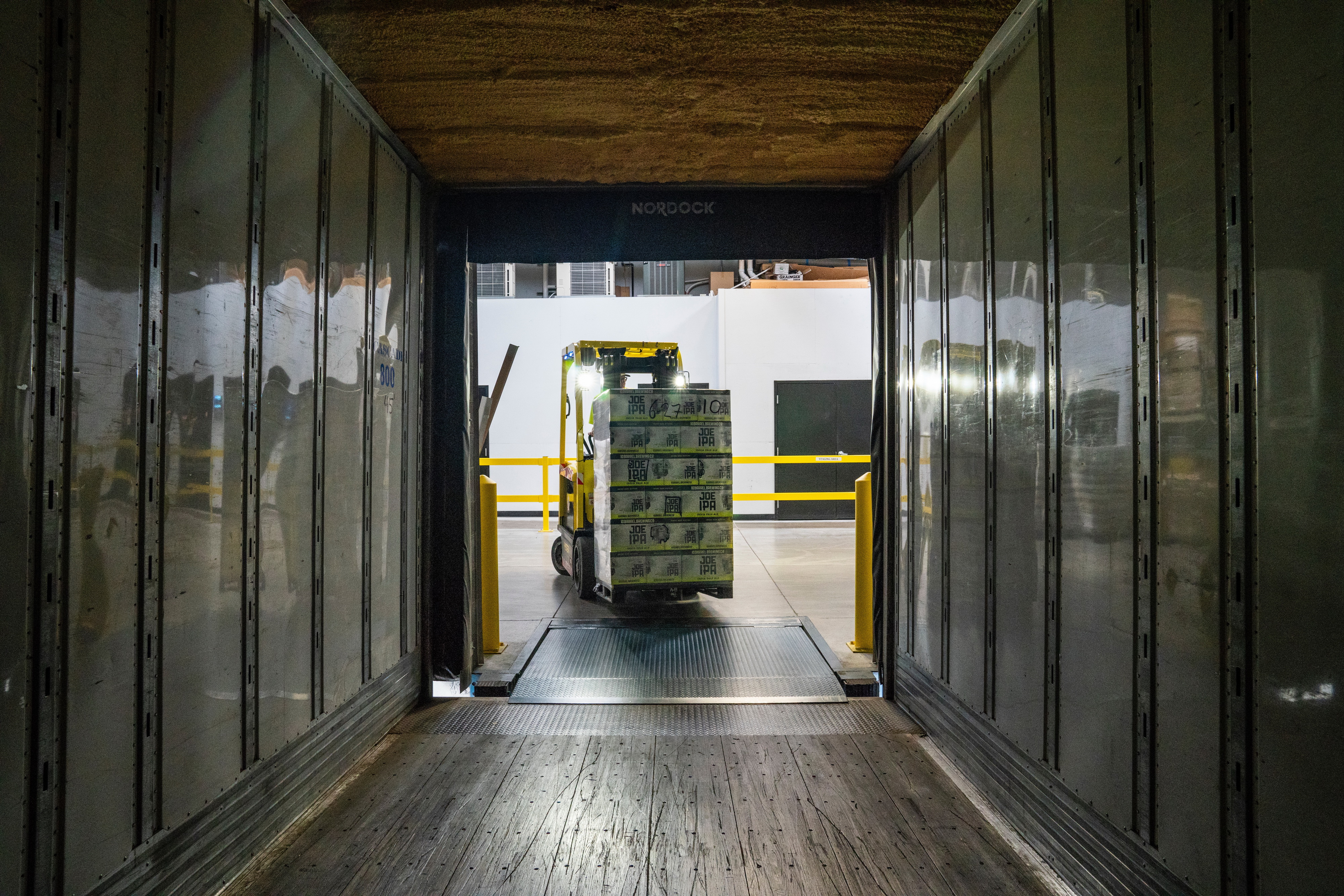
Warehouse automation benefits include reducing risks in high-risk activities such as handling heavy pallets and high racks, operating in high-traffic environments, and, sometimes, working with toxic products (e.g., chemicals). Today’s robots can do most of these jobs eliminating risks for employees.
Reduce errors
Many different applications automate inventory. Some of them are standalone systems such as mobile apps and fleets of drones equipped with barcode readers. Others are part of bigger automation warehouse management systems. Either way, the primary goal of building an inventory system is better precision and control over storage and product.
This is especially important since human errors account for about 80% of process deviations in well-defined industries like warehousing. Error-free inventory leads to reduced losses and waste, which is one of the biggest advantages of warehouse automation.
Optimize costs
Warehouse modernization projects are expensive. But they are also paid off quickly. The reason for impressively fast ROI is multiple new saving points provided by automation — reduced labor cost, higher performance, quick replenishment, optimized handling and storage cost, minimized inventory errors, eliminated risks of mishandling and product loss, etc.
This is one of the warehouse automation advantages that brings measurable and tangible results and thus often becomes the most important driver for warehouse modernization. Wonder if it is worth time and expense? Check this example of saving a medical distributor $100k per year by integrating several automation technologies for picking, moving and shipping.
Scale up faster

The best thing about this technology is that you can easily scale it up and down and quickly respond to changes in consumer demand. For instance, retail brands don’t need to hectically double their personnel for the holiday season and deal with temporary employment. Instead, they can tweak schedules and reprogram their fleets to manage higher input and output, while employees can focus on more customer-centric activities such as customer service, holiday packaging, etc.
Become resilient
Highly automated warehouses had an edge when the pandemic came because they were by default more resilient to unexpected changes. Long-term spike in demand for consumer products, new safety, sanitation, and social distancing measures hit hard on fully human-operated warehouses. On the contrary, the companies that could use the advantages of an automated warehouse management system — with robots, warehouse vehicles, and centralized inventory control — were better prepared.

Drive sustainability
Sustainability is on the agenda of nearly any business, retail and logistics are no exception. Warehouse management solutions and other automation technologies help executives get closer to their environmental goals. The benefits of automated warehouse management systems include better control over resource usage, optimized space utilization, and the ability to integrate basic green practices like recycling into daily operations through predictive analytics, condition monitoring, and smart management systems.
Gain visibility
Improved visibility in warehouse and logistics operations is another important benefit of warehouse automation. Using various sensing technologies, managers get a 360-degree view across all critical areas, including inventory management, order fulfillment, and resource allocation, enabling better performance monitoring, demand planning, and risk management.
Reduce and control risks
Thanks to improved visibility, warehouse managers can identify and forecast potential risks much faster and prevent problems and disruptions to operations long before any arise. This includes stock discrepancies, machinery malfunctions, and inefficient use of resources. Equipped with real-time data and insights, managers make proactive decisions to avoid risks and better adjust to changes.
Optimize machine maintenance
Using IoT data and AI technologies for condition monitoring and predictive maintenance, managers optimize the use of machinery, prevent downtime and equipment failures, and make sure warehouse infrastructure works as it should.
Bring new opportunities
Digital technologies unleash many new opportunities. Perhaps the most obvious benefit of warehouse automation is the ability to keep round-the-clock consistent work performed by fleets of robots and drones.
There’s more. Using the data collected by different systems on-site (traffic, fleet tracking, space usage, etc.) and advanced analytics tools, warehouse managers can better understand how to adjust processes, and optimize warehouse layout and workflows to maximize performance.
During over a decade in digital product design and development, we have helped several leading retail and logistics brands integrate custom warehouse and production automation solutions into their operations and gain warehouse automation benefits.
One of our long-standing clients, Printique, uses custom data analytics and visualization software to automate order-to-delivery management on their production site. We have designed and developed this system to help the company sustain an increasing influx of customers yearly during the sales season and provide managers and executives with handy tools for real-time monitoring and analytics. Today, this monitoring software enables better control and visibility of all internal processes from receiving an order online to production and completion.
We designed and developed an inventory management platform integrated with industry-grade scanners to enhance the efficiency of warehousing operations for a US-based automotive retailer. Since the launch of the platform, the client has seen major improvements thanks to the benefits of warehouse automation. We continue scaling the system that is now widely used to automate inventory management, job scheduling, and reporting.
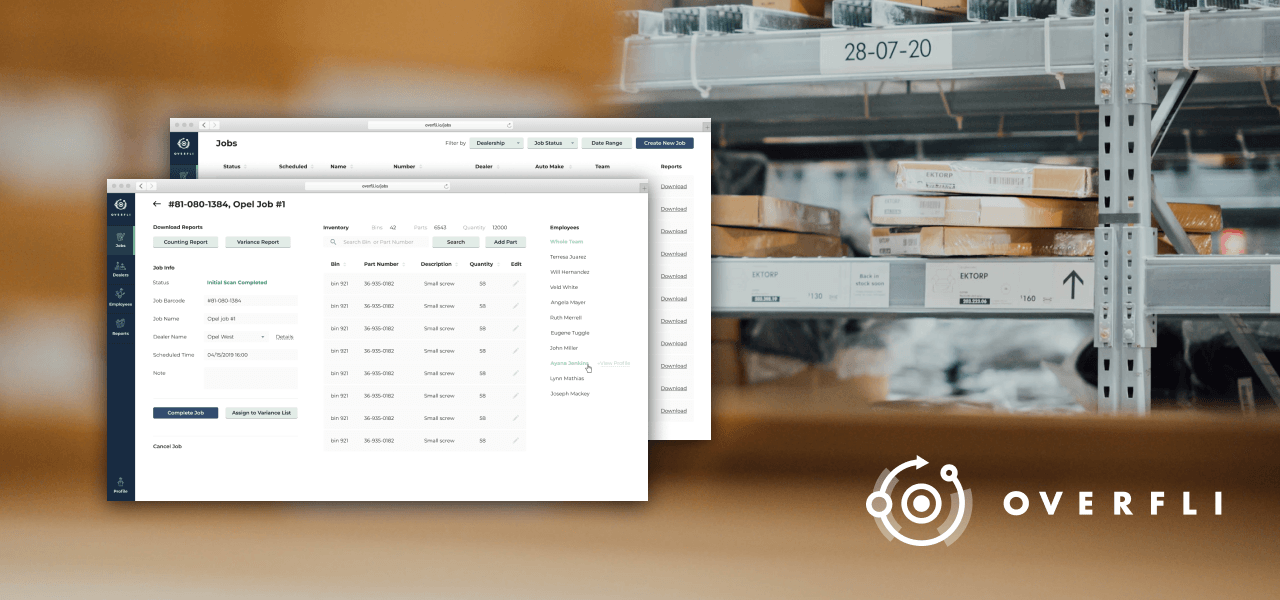
If you are looking for an experienced tech partner to help you leverage the benefits of warehouse automation solutions and tailor them to the unique needs of your business, drop us a line. We offer end-to-end software design and engineering services and have a broad skill set across web, mobile, IoT and big data development. We will help you define the goals and requirements of your project, estimate the investment of time and expenses, create a roadmap and actional plan for your project, and bring warehouse automation advantages to life.
Accelerate your warehouse operations
Increase the efficiency, resilience and safety in your warehouse with a custom automation solution.
Talk to tech expertsThis post was originally published on December 7, 2021 and updated on July 7, 2023, and February 19, 2025.


